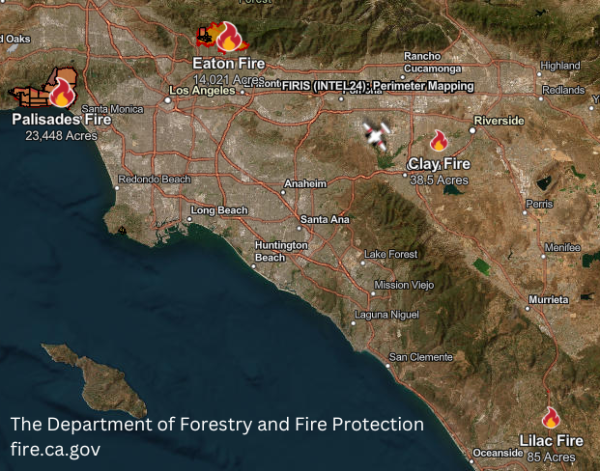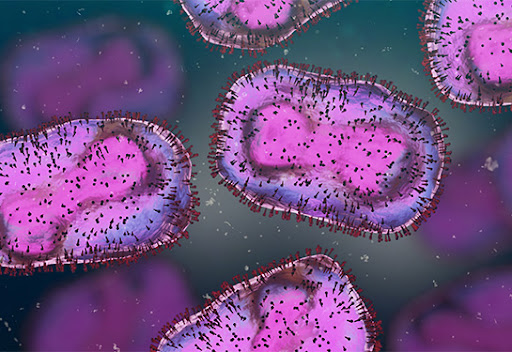STATES OFFERED $1 BILLION TO HELP REDUCE PFAS CHEMICAL POISONING
Here is what is known about these chemicals and the ways to remove them
Recently released information from the United States Environmental Protection Agency (EPA) and Centers for Disease Control and Prevention (CDC) have now confirmed that PFAS chemicals (per- and polyfluoroalkyl substances) are found in most water supplies and most people have been exposed to them. Almost all humans have been exposed to PFAS chemicals at some point in their life, and at least 97% of people have the chemicals in their blood supply. These chemicals are found everywhere and cause serious health issues.
Most people don’t know about these chemicals and the few that have heard of them, don’t have extensive knowledge about them. Students and teachers at RHS both have limited knowledge of PFAS chemicals.
“I may not know a lot about them, but I do know it’s harming the marine life,” said Duncan Herrington, 10.
These chemicals are harming wildlife and people, and from President Biden’s Bipartisan Infrastructure Law, the EPA is making it available for states to get a $1 billion grant to help communities on the frontline of the PFAS chemical contamination. The money can be used for technical assistance, water quality testing, contractor training, and installation of centralized treatment technologies and systems. This funding is supposed to help people all across America to have better water and health.
The PFAS chemicals were man-made in the 1940s and are still used in everyday products and shipping containers. They are most likely found in packaging and cookware, stain-resistant clothing and carpets, and firefighting foam. These chemicals are nicknamed ‘Forever Chemicals’ because of the carbon-fluoride bonds that make them almost impossible to degrade. There are relatively 75+ PFAS chemicals of all levels of toxicity. A more entertaining way to learn more about these chemicals, and see their effects, is through the movie “Erin Brockovich.”
According to the EPA’s research statement on PFAS chemicals, “most people in the United States have been exposed to PFAS.” They are currently still researching PFAS and where these chemicals can be found, along with any other health issues that they can cause.
So far, experts understand that PFAS chemicals and their dangers have a variety of health risks known to the CDC, including harm to the reproductive system. A person carrying a baby who is exposed to high levels of PFAS can possibly develop increased blood pressure or pre-eclampsia, a serious blood pressure condition that develops during pregnancy. The babies carried during these pregnancies are at risk of decreased weight as well. Additionally, children have a lack of response to vaccines after PFAS exposure. Along with these risks, all people exposed have a higher probability of getting kidney or testicular cancer, and normally have a change in liver enzymes along with heightened cholesterol.
These dangerous chemicals can be found anywhere, but prominent locations that have large contamination in water supplies include: California, Florida, Alabama, North and South Carolina, Illinois, Ohio, Kentucky, New Jersey, New York, Massachusetts, Rhode Island, Michigan, and Colorado. In addition to these states, there are over 600 military facilities that have PFAS contamination in their water supply.
There are currently three main treatments that have been proven to remove PFAS chemicals: this includes active carbon, ion exchange, and high-pressure membranes. Active Carbon treatment (GBC) is a way of absorbing the chemicals between solid and liquid states. The Ion exchange is a way of weakening and breaking the bonds that make up the PFAS chemicals. Through the high-pressure membranes, the chemicals reach a high pressure and break down; this option normally has the highest success rate with 80% of the chemicals eradicated.
Although she did not have a lot of prior knowledge about PFAS chemicals, Teri Villines, biology teacher, said it reminded her of the previous issue of chemicals in baby bottles, and how these scary chemicals need to be fought.
These chemicals are a dangerous and serious issue that is found all over the U.S. There is not a lot known about them, but scientists are working hard every day to learn more about them and make advances in the ways that they can be eradicated. It is hard to know how many more health effects will be caused by these chemicals, and how many will be affected before it is stopped. This process is a slow one, but a necessary one.






